Appearance
I am starting with the wheels. I observed that, aside from the distinctive blue color, the rear of the moped features the wider wheel commonly found on some Puch Mopeds. Specifically, this design element caught my attention. The front is the other version, which is narrower. The tires look to be Sava MC11. Making our way up from there, the front and rear fenders are original, except for the paint. Most builders will remove these or chop them down. It would be awesome to see more custom fender work on moped builds.
Let’s examine the front end of this exceptional moped build. Initially, Eric opted for stock spring-loaded forks, meticulously matching the color scheme. Additionally, he modified the headlights with a color-matched bucket and polished ring, elevating the overall aesthetic.
Frame
He did not chop or “de-tab” the frame as most of us normally do. He opted not to “chop” the seat and lower it. Instead, he got a Puch with a “slammed” seat. It has a lower profile than the bulky stock seat. The rear rack helps to hold the rear fender. It gets removed a lot of times in other builds I see. I spotted more spikes on the rack where mounting holes for more reflectors would be. It would be interesting to see a build capable of keeping the rear fender without the rear rack. I’m curious to see what that would look like.
Tank
The moped gas tanks designed for Swinger and Pinto mopeds are some of the most fun ones. I believe that’s what draws people to like these mopeds. Is it a top tank or a step-through? Pinto mopeds come painted with chrome on top. The swinger mopeds, on the other hand, come with a fully painted gas tank.
Eric added more details to make the tank look similar to a Pinto gas tank with color-blocking. The lower part of the tank would be the same color as the section with the model decal. The lower section matches the frame after being painted. This paint scheme makes the tank look smaller than it already is. The last bits I like about this tank are the decals and black stripe used to break up the colors. I appreciate it when moped builds have decals applied back on, although many don’t. The final detail I noticed was the polished gas cap and visible hardware.
Engine
I hope I covered the top half of the moped well. Now, let’s discuss the lower part of the build. The rear shocks on this Swinger model are worth highlighting. When it comes to mopeds featuring this style of rear shocks, they typically don’t look as sleek as the ones on this model. Many of us tend to quickly swap them out or replace them upon acquiring a moped with this design. Additionally, removing the engine side covers is another common practice. Eric painted the pair to match the color scheme. Eric has nicely polished the pedal arms and flywheel cover. A pair of vintage-style pedals add to this build’s small hit of brown. For the engine performance, I can assume it has a new top-end and circuit exhaust upgrade.

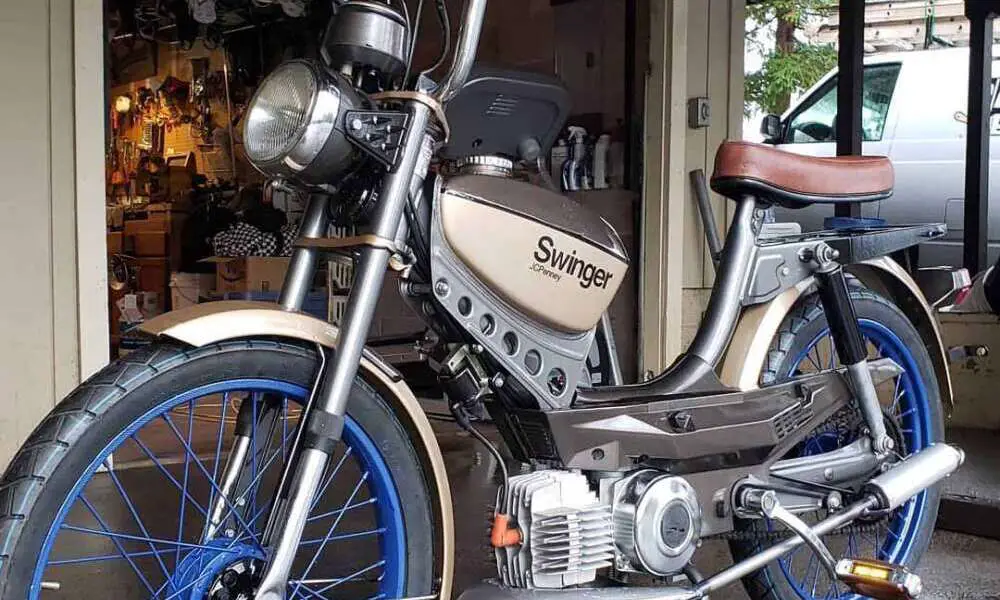
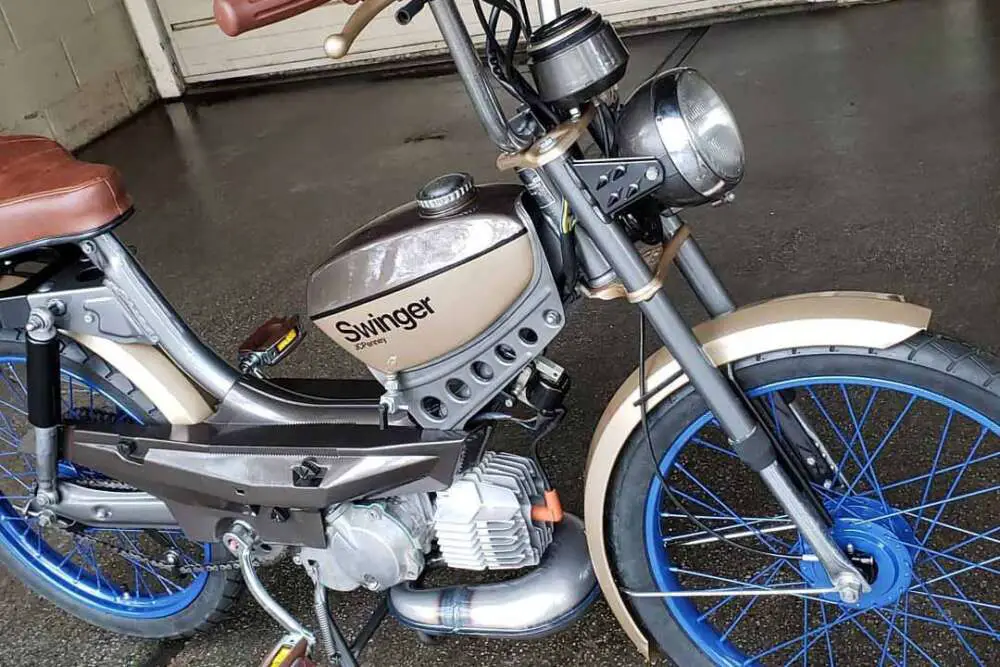
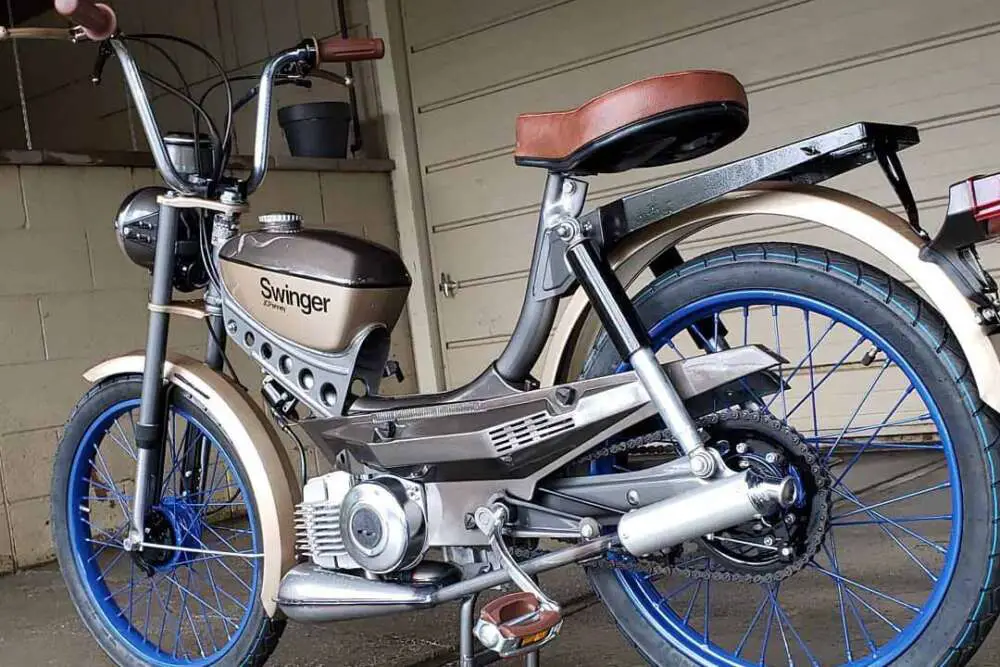
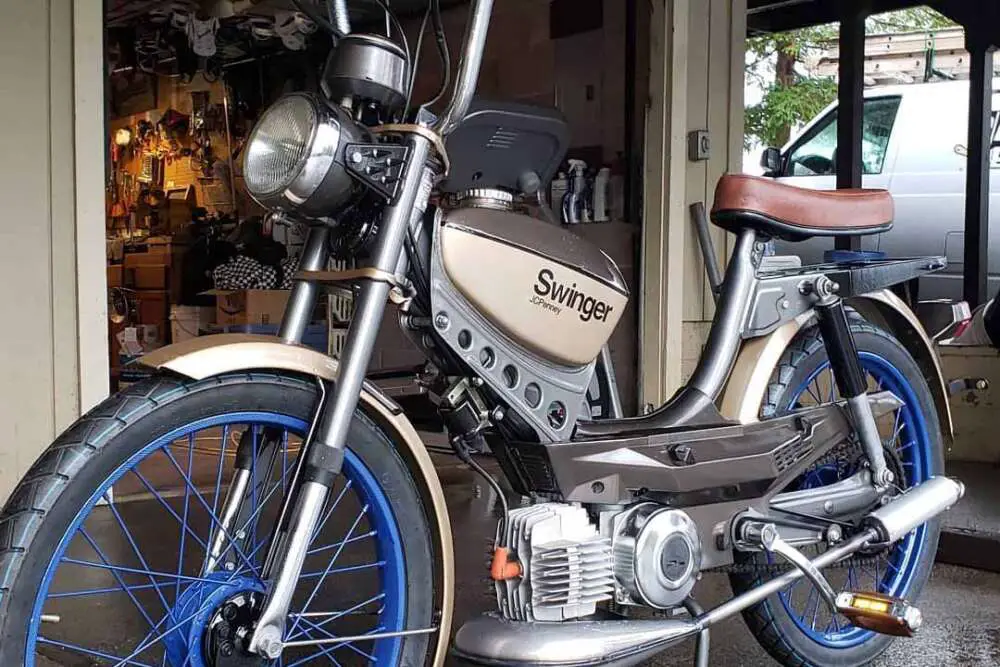
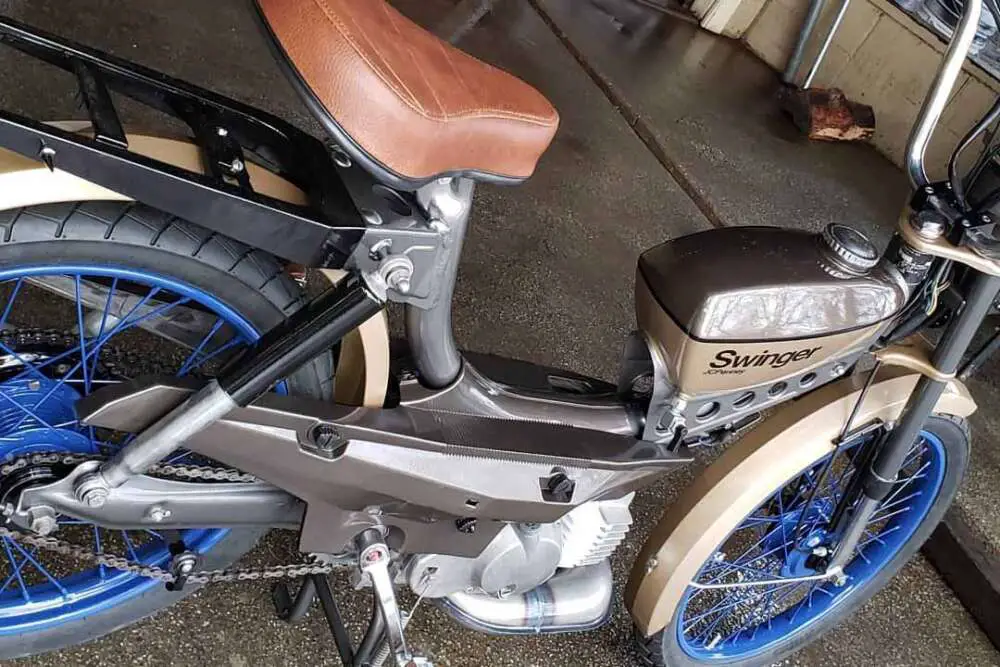
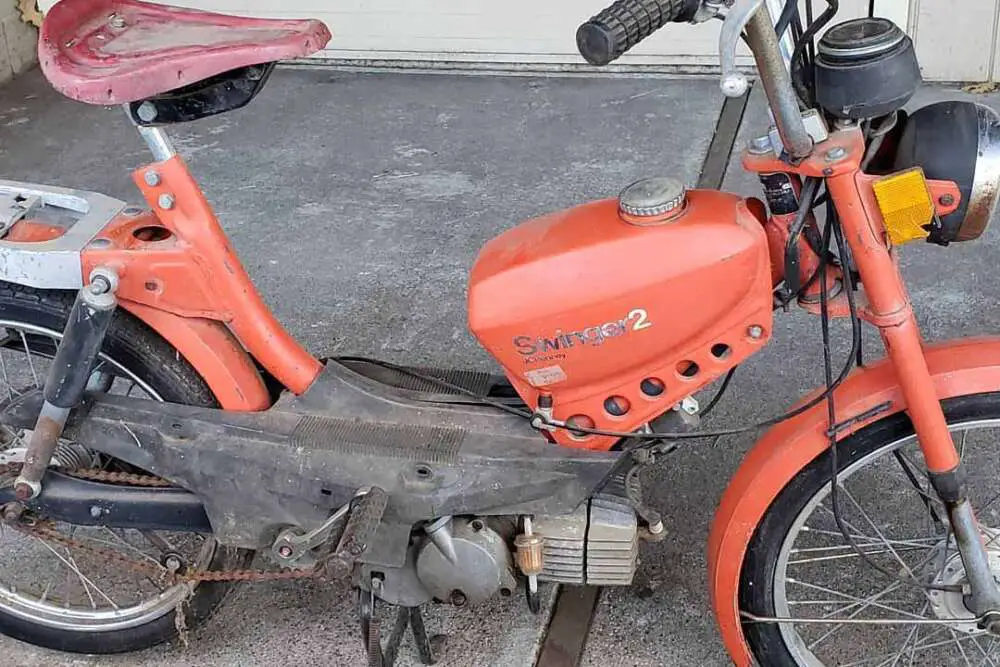
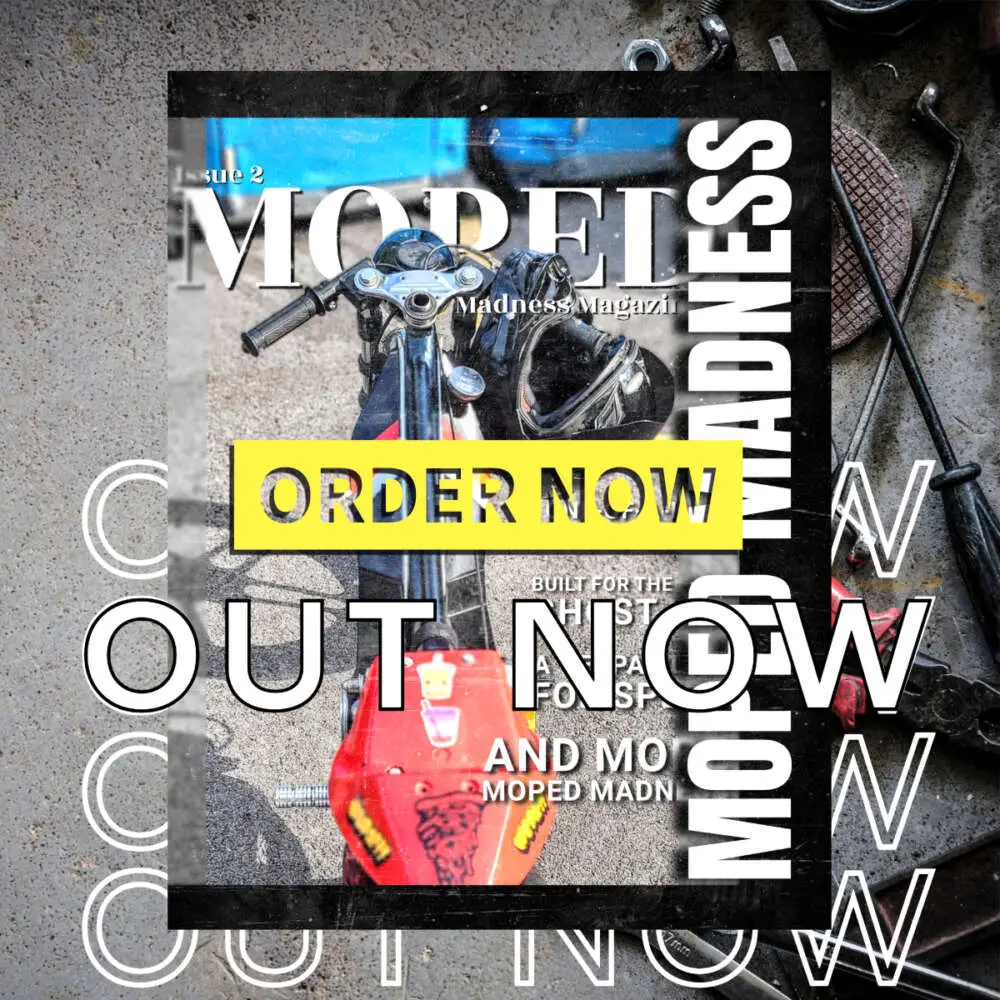
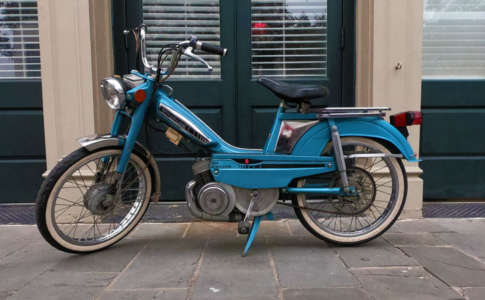
No comments